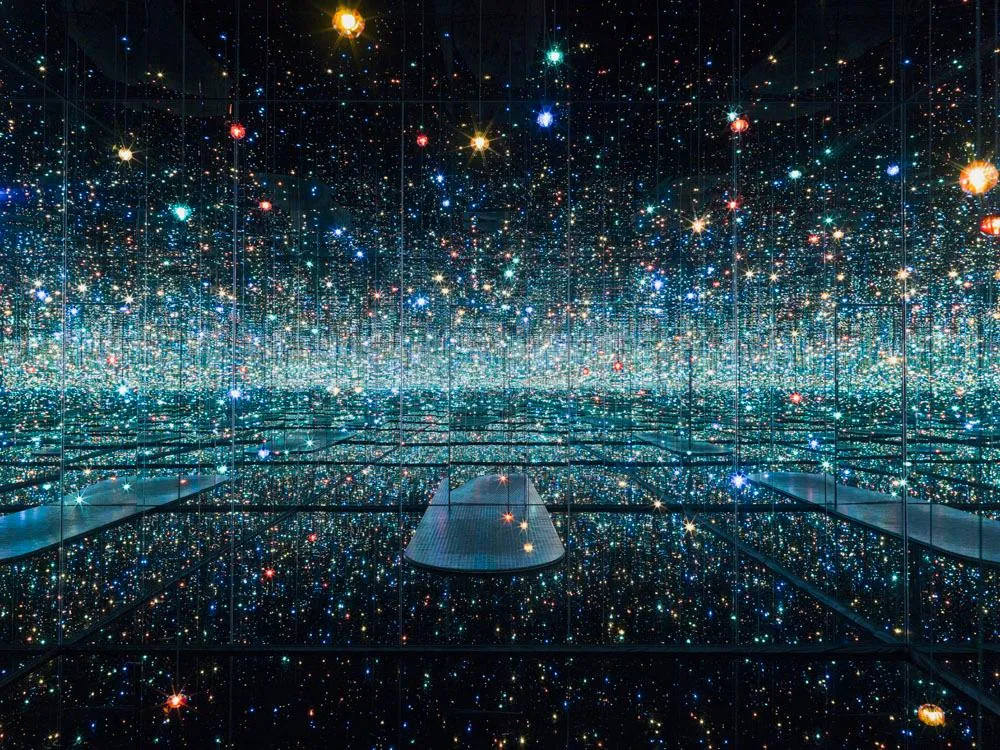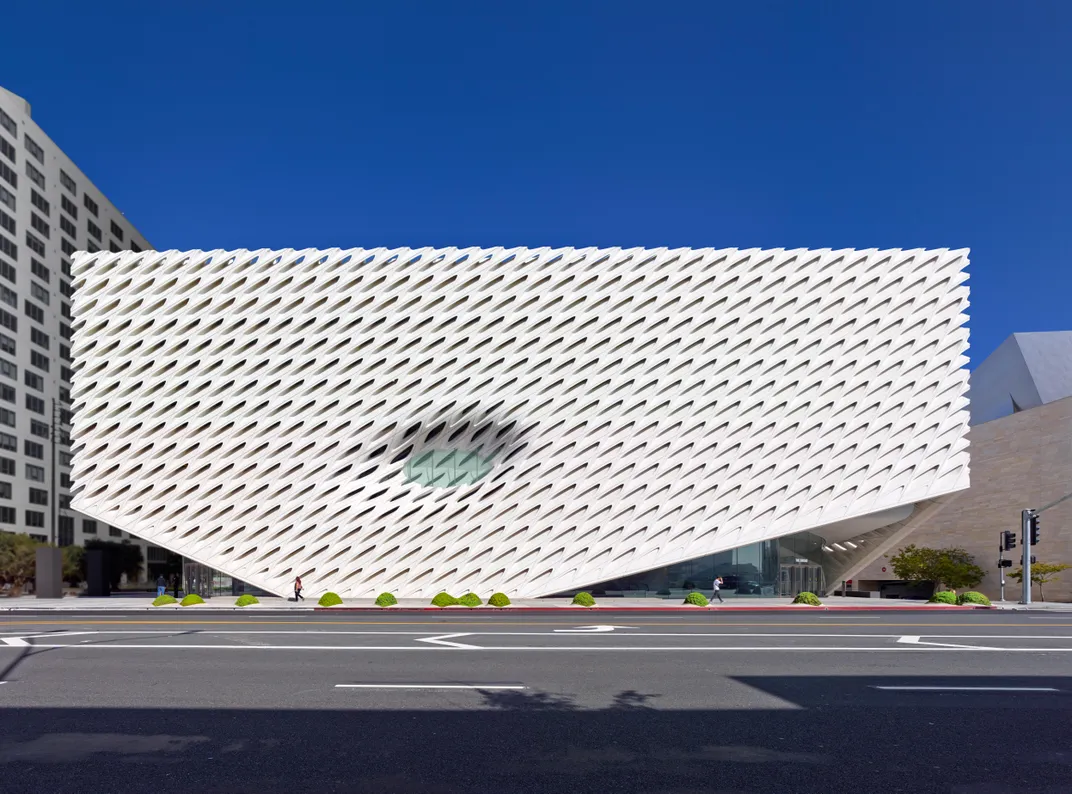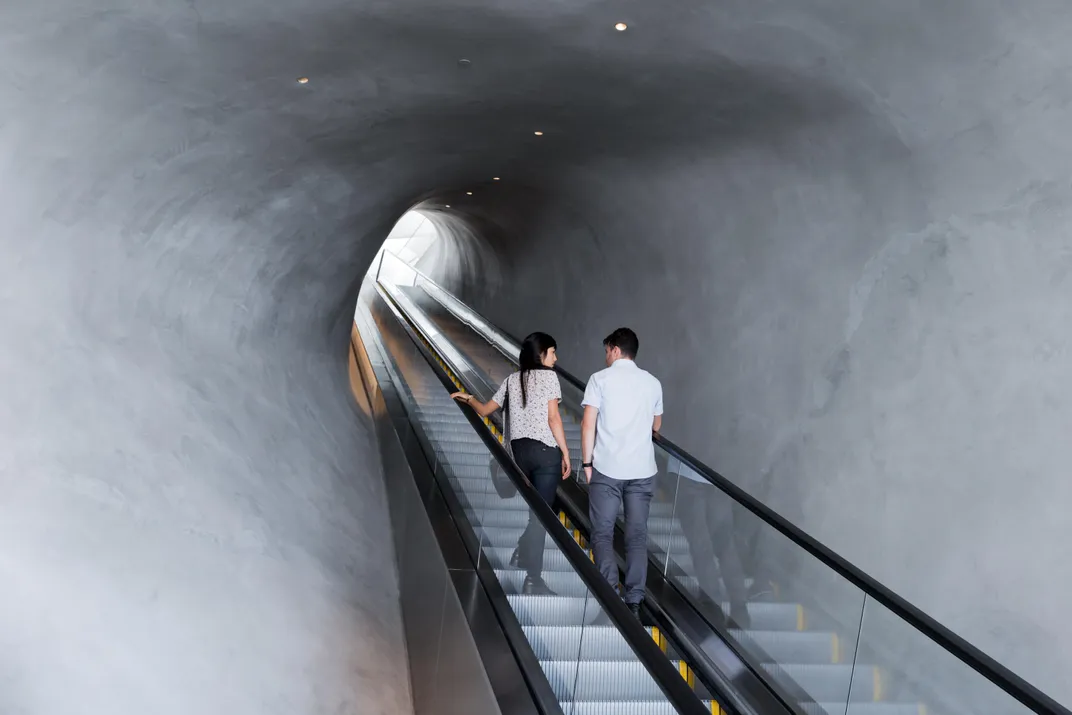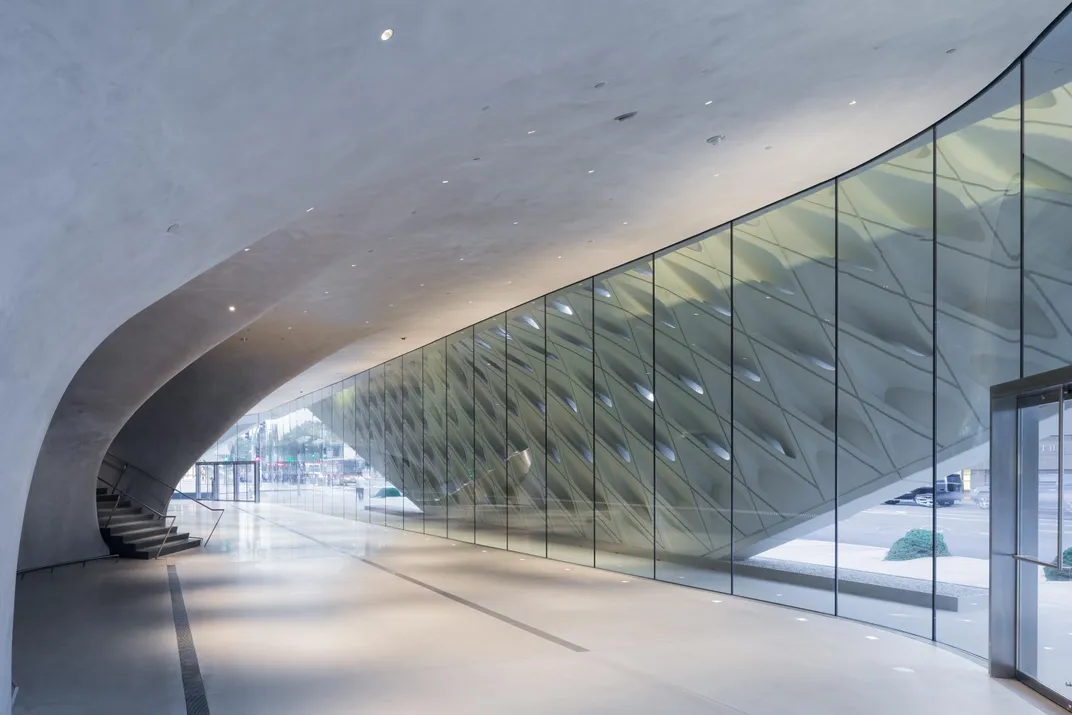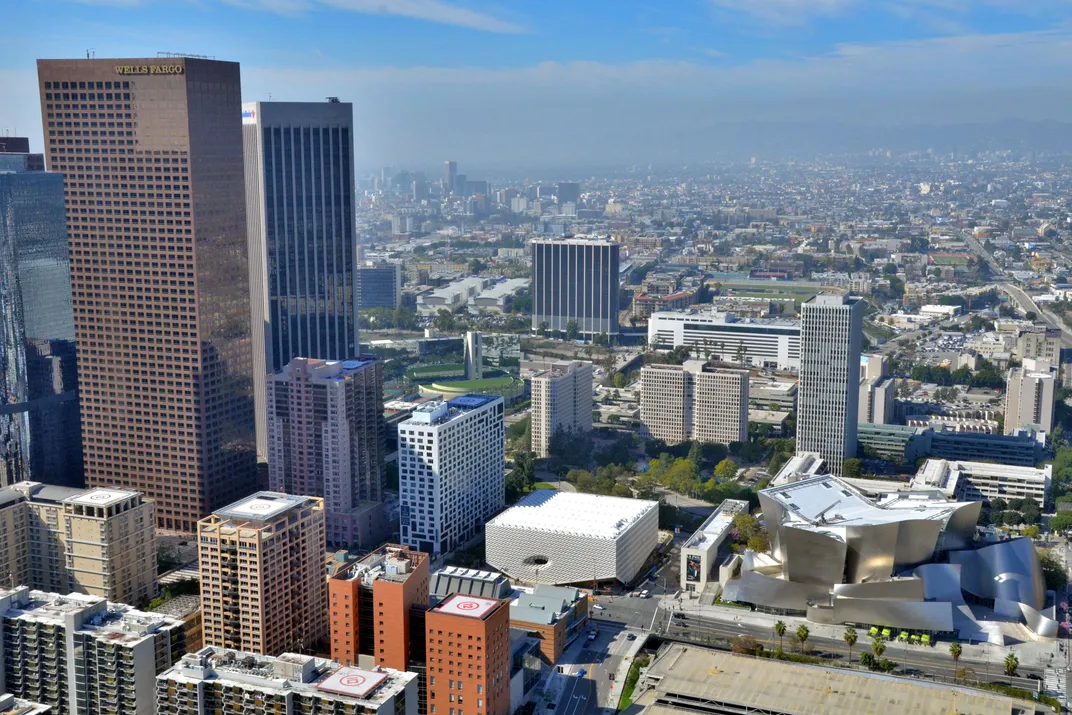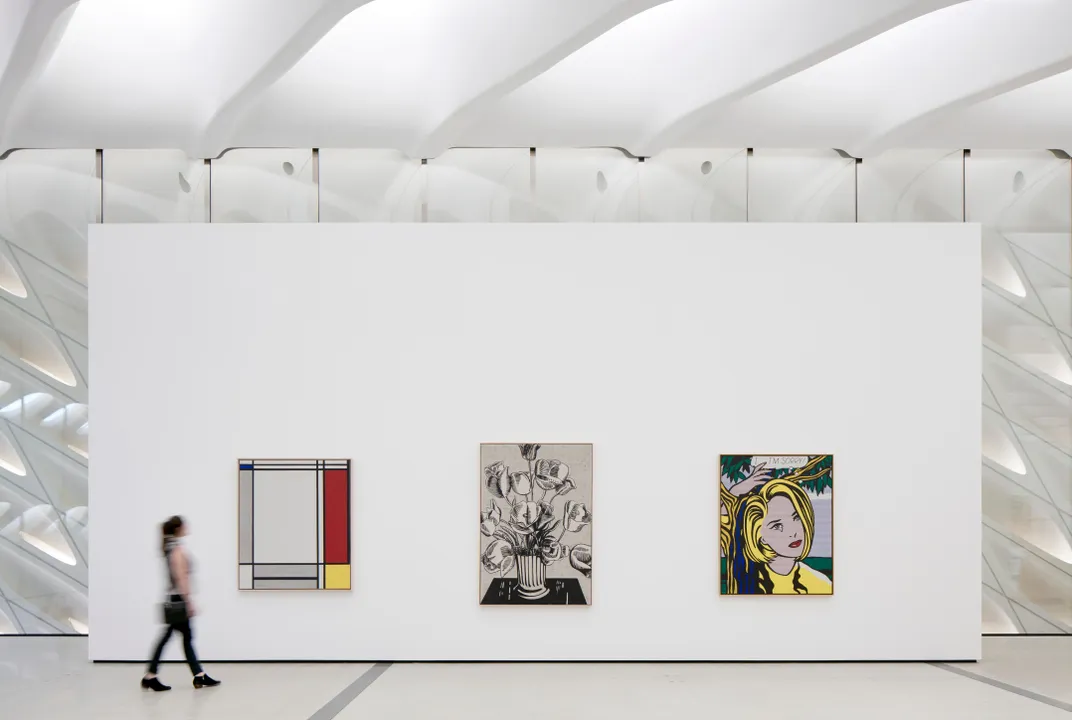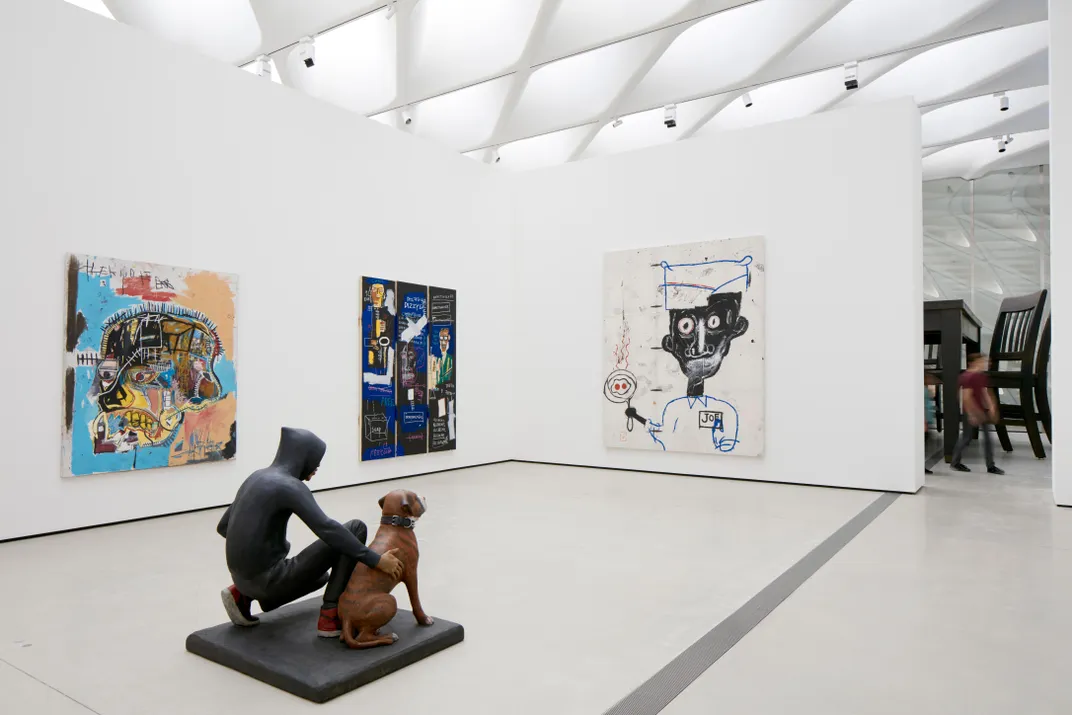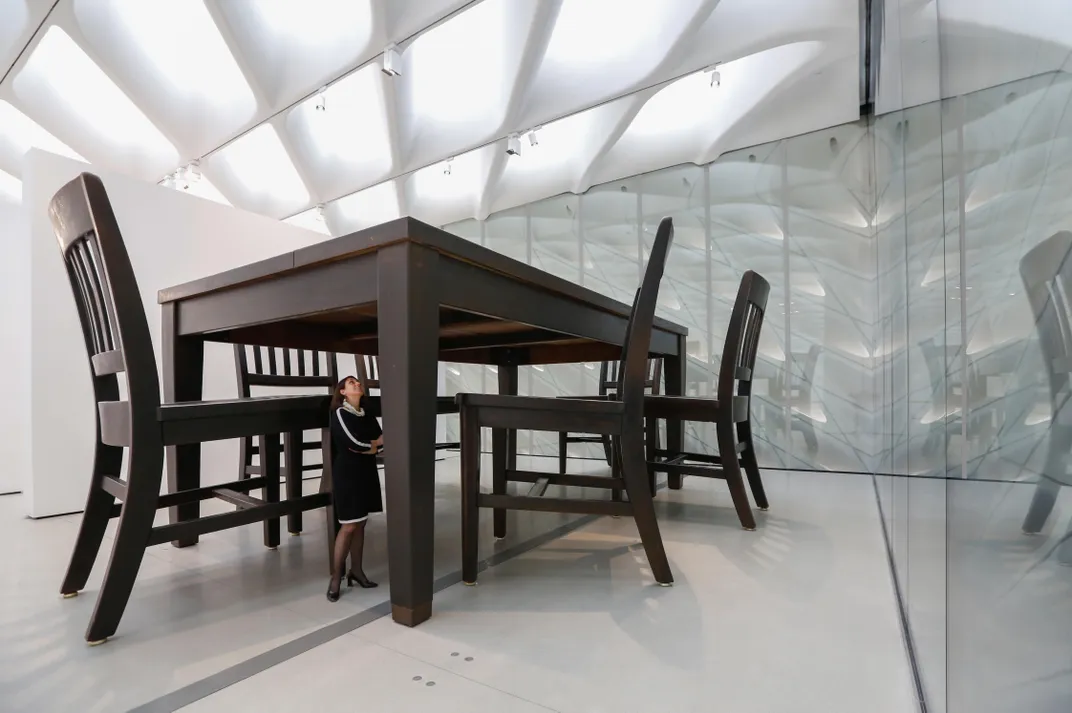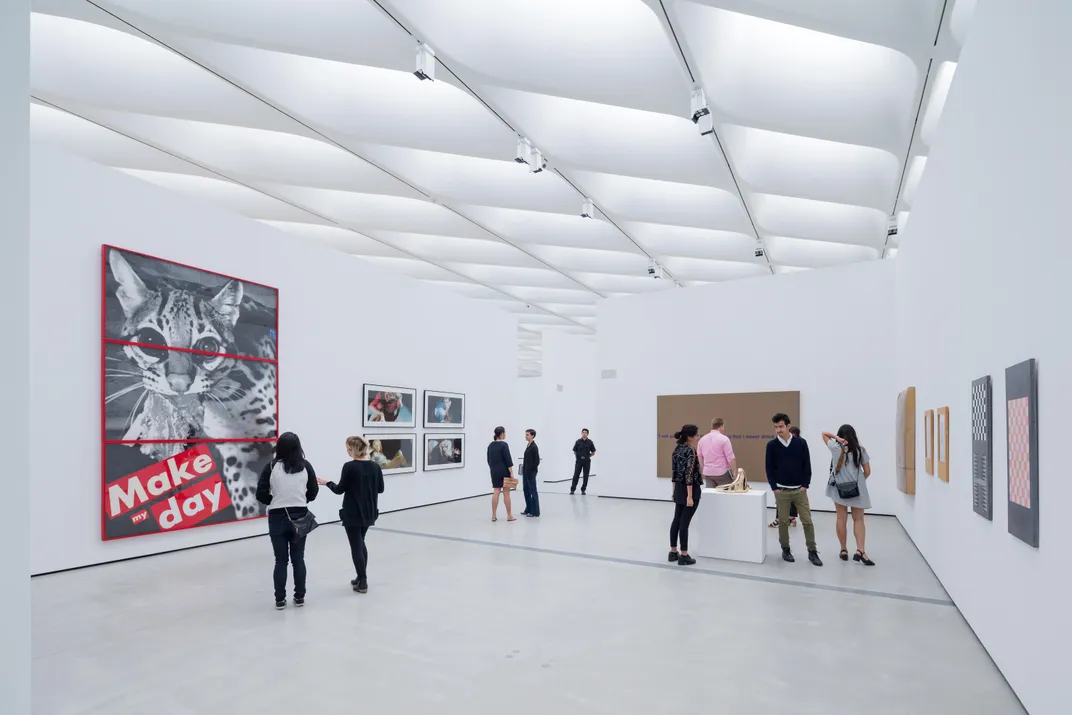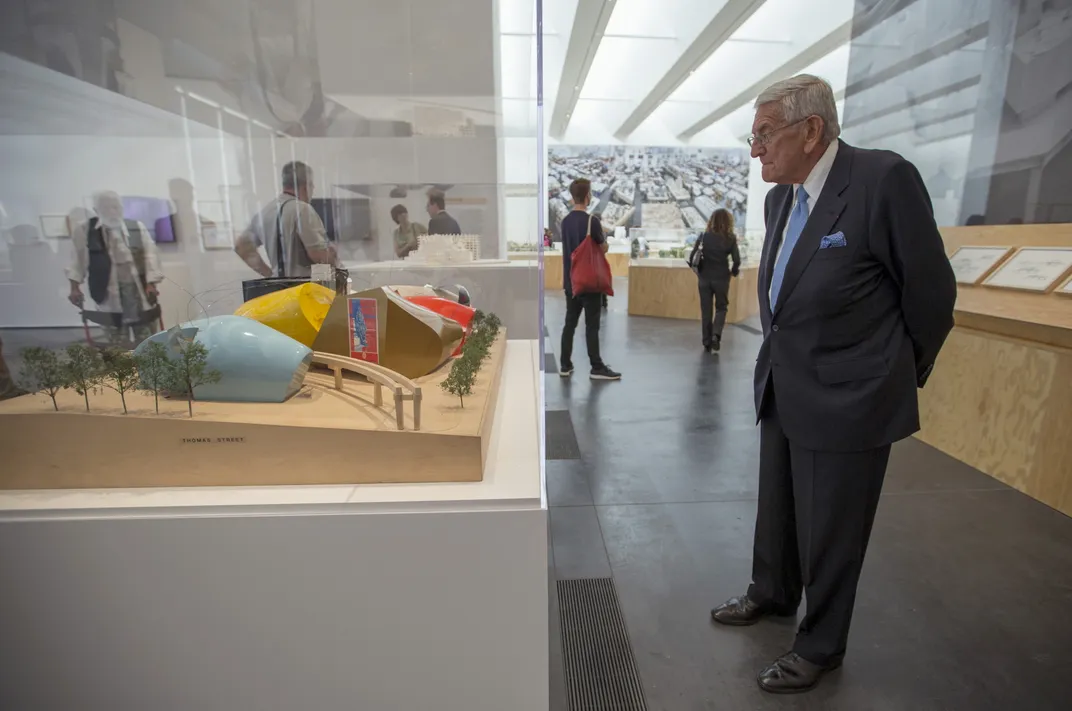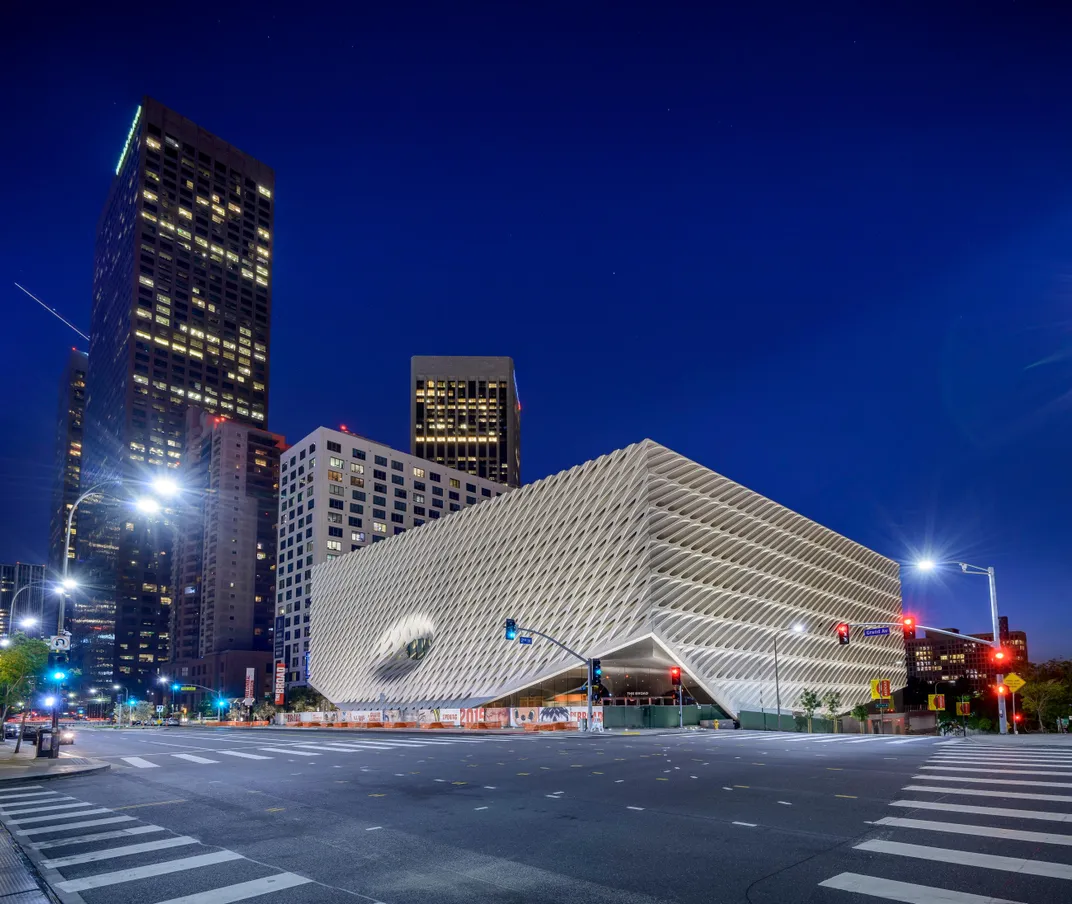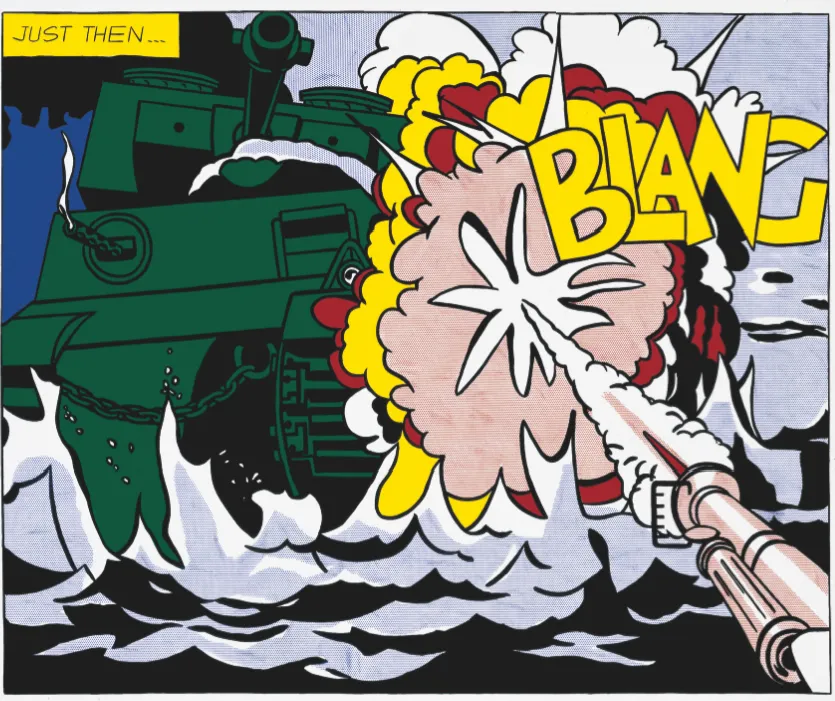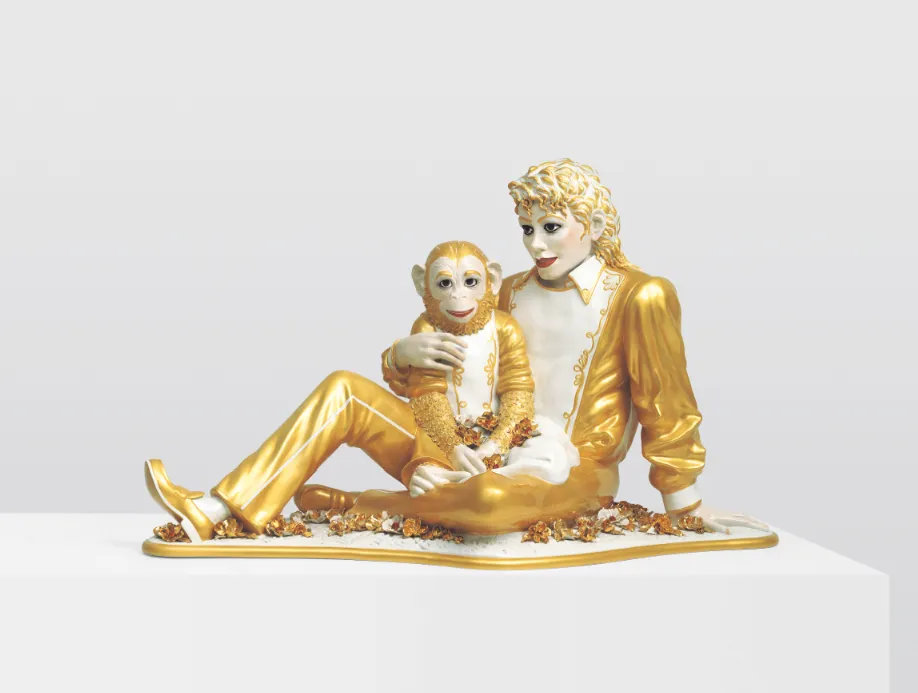The Big Names of Art (and a Bit of the Unexpected) Debut at the Broad Museum in L.A.
Housing one of the greatest collections of contemporary art in the world, this new landmark is ready for its close-up
In a city defined by celebrity, a new contemporary art museum in Los Angeles is doing more than just fitting in. The Broad (rhymes with road, not rod), an ambitious museum featuring work from perhaps every important modern artist from the last six decades, opens to the public on September 20.
Standing at the corner of Grand Avenue and Second Street and across from the Walt Disney Concert Hall, the museum is a major addition to Los Angeles’ revitalized downtown. The $140 million dollar, 120,000 square-foot building that houses the art is a masterpiece in itself. Designed by the architecture firm Diller Scofidio + Renfro (the firm behind New York City’s High Line), the museum is simplistic, stark and striking – looking appropriately contemporary for a collection that is exactly that. The free museum will house 2,000 works from more than 200 artists — a collection thought to be valued at over $2 billion.
Financing it all and providing the immense collection are two of the richest people in the city: billionaire philanthropists Eli and Edythe Broad. They have used their fortune to amass a collection of contemporary and modern art that is one of the tops in the world — a collection of masterpieces of the artists that have defined the modern era, including Lichtenstein, Koons and Warhol.
The museum’s unique “veil and vault” design is best experienced from the top down. First, visitors take a space-aged escalator to the third floor galleries, which contain many of the collection’s highlights. The distinctive pop art of the 1960s, emphasized by Roy Lichtenstein’s colorful comic book sensibility (Ben-Day dots and all), provides a sense of whimsy. Andy Warhol, perhaps the most famous artist of the last 60 years, is well represented on the third floor as well: Works on display include Two Marilyns and one of the censored Most Wanted Men.
On the same floor are galleries dedicated to the art of the 1980s and 1990s, including Jeff Koons’ stainless steel Rabbit. This 1986 artist proof (there are actually three editions of the Rabbit, all of which are valued in the tens of millions) is one of Broad’s favorite pieces — so much so that Rabbit appeared with him on the cover of his 2012 book, The Art of Being Unreasonable. Perhaps the most attention-grabbing Koons piece in The Broad is the life-sized porcelain statue of Michael Jackson and his pet chimp, Bubbles. Unveiled in 1988, it courted controversy due to the stark whiteness of Jackson’s skin and the duo’s unorthodox pose.
As they head down to view art of an even more recent vintage, visitors can peer into the second-floor vault for a glimpse of works not currently on display. The first floor of The Broad features art completed since the turn of the millennium. One standout is The Visitors, a haunting, nine-screen video piece from Icelandic artist Ragnar Kjartansson. In the 2012 piece, nine musicians repeat lyrics from the same song with different instruments in the famed Rokeby, a 43-room Gilded Age mansion on the Hudson River. Also on the first floor is the immersive mirrored LED light installation Infinity Mirrored Room from Japanese artist Yayoi Kusama, which can only accommodate one visitor every 45 seconds. While on display at the David Zwirner Gallery in Manhattan in 2013, it was so popular that people lined up for eight hours to experience it.
While the art in the Broads’ collection from the last two decades definitely has hype, the third floor contains what is perhaps the essence of the museum. “The great strength of the Broad collection is the Sixties art movement and what grew out of that,” Los Angeles Times art critic Christopher Knight tells Smithsonian.com. “This is a museum specifically for pop-related contemporary art, and it’s shifting the whole tenor of the city.”
Los Angeles is fast becoming one of the art capitals of the world. With several major art museums and a burgeoning street art scene, the city now rivals New York and London in terms of contemporary art. The Broads have a lot to do with that: They have given nearly $1 billion to local LA arts and cultural organizations, including $60 million to the Los Angeles Museum of Art, $10 million to the Santa Monica College performing arts center and $7 million to the Los Angeles Opera. The couple has also given money to non-art entities, donating $100 million for biomedical research and nearly $100 million to Michigan State University.
Eli Broad first made his money in real estate, borrowing $25,000 from his in-laws (he’s been married to Edythe for 60 years) to establish Kaufman & Broad in 1957. Today, KB Homes is one of the largest home building companies in the world. In 1971, Broad went into the insurance game, purchasing a small company he later renamed SunAmerica and sold to AIG for $16.5 billion. Today, Forbes recognizes Broad as the 65th richest person in America, worth over $17 billion.
Broad has been rather unabashed in proclaiming Los Angeles’ stature, telling Bloomberg News that “We’re really the contemporary-art capital of the world…New York still is the commercial-art capital of the world — but a month doesn’t go by when one of their galleries doesn’t move to Los Angeles.”
The museum’s design is as outspoken as its benefactor. All in all, the building needed almost five years to be built: The site was selected in August 2010, the design was unveiled in January 2011 and construction began in March 2012. The results were a geometric, vaguely sci-fi, honeycombed structure that seems destined to become one of the city’s most memorable.
Though plans for the museum sparked early concerns about a Broad-led “cultural ambush,” the greater Los Angeles arts community couldn’t be happier with The Broad’s presence in the city. Laura Zucker, executive director of the Los Angeles County Arts Commission, tells Smithsonian.com via email that The Broad “helps cement Los Angeles as a locus for contemporary visual art in the country, creating an unparalleled constellation of cultural facilities on our now truly Grand Avenue.” Despite middling art critic reviews, it seems clear that The Broad will attract a new type of tourist to Los Angeles — one that’s there for the art, not the celebrity.
Planning Your Next Trip?
Explore great travel deals
Smithsonian magazine participates in affiliate link advertising programs. If you purchase an item through these links, we receive a commission.
